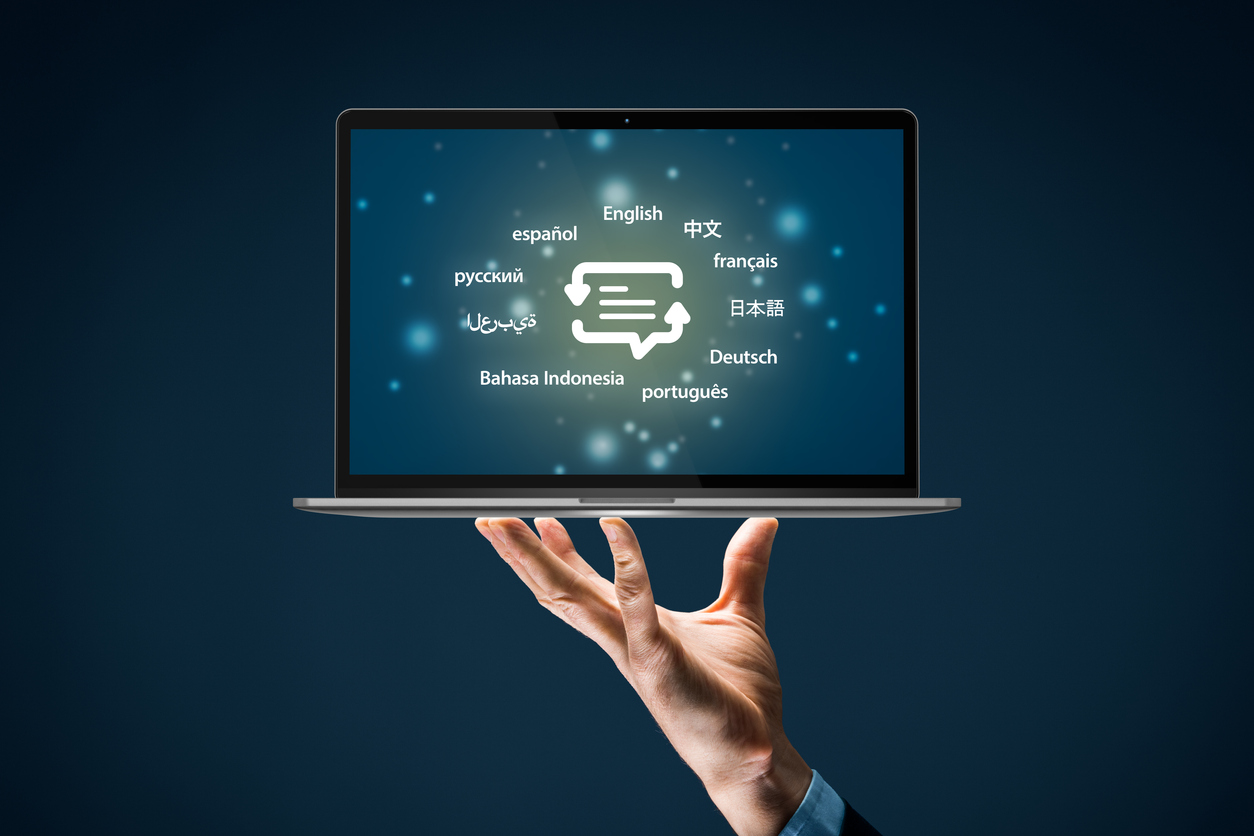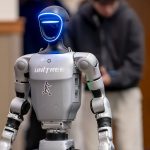Not so long ago, we became more aware of the language barriers and the issues that arise from miscommunication. During the COVID-19 pandemic, miscommunication of vital information regarding the health of patients contributed to higher infection rates in some communities.
Take, for example, Australia. In Australia, people speak over 300 different languages and 20% of the people don’t speak English at home. When people went to a busy emergency department seeking medical help, many of the consultations had to be conducted with an interpreter to avoid grave mistakes and misdiagnoses.
The barrier becomes even bigger and more devastating in cases where time is of the essence, such as in medical circles. But it’s not only that. In the world, over 7,100 different languages are spoken and many people cannot communicate because of it.
The one common denominator in this story is artificial intelligence. Thanks to AI, the world can overcome the language barriers in business, healthcare, and basically every other industry where more than one language is spoken. But, how can AI become the bridge between language barriers? In this article, you’ll learn exactly that.
Artificial intelligence and machine learning went global
Even though AI still has a long way to go to break these barriers, we are already seeing numerous examples of its ability to process different languages. Research shows that there are over 4.2 billion voice assistants that people use in the world right now, such as Alexa, Siri, and Google Assistant.
Voice assistants are continuously upgraded to accommodate more languages. There is a big number of people working behind these tools and training the machines to work better and smarter.
While we still haven’t grasped all that AI offers, we are slowly learning how to use AI wisely and reap the many benefits it offers. This expands beyond breaking language barriers and enters almost every industry we have in the world.
Machine learning, a form of AI, is used on computers to enable them to make smart decisions. Computers and other devices read a vast amount of data and take actions based on it. We see automation around every corner - in companies, in the healthcare system, in apps and tools, etc.
Thanks to AI, workplace communication turned virtual during the pandemic. Thanks to it, machines now speak a universal language and businesses can employ this regardless of what language their audience speaks.
For example, people can search engines in almost every language and find results within seconds. It is artificial intelligence that makes it possible for the engines to deliver smarter results and understand the context by solely getting some words and phrases.
If you type ‘malaee’ in the search engine, Google will deliver the translation of this word in English from Indian, which is ‘cream’. If you scroll forward, you’ll find some choices of creams. If you add ‘malaee near me’, it will come up with actual stores that are close to you where the creams are available.
Similarly, companies use live chat boxes that are trained to offer help in multiple languages. By entering the answers to FAQs and automating the responses, bots can accommodate many customers in the language they speak.
One of the best things that AI offers that will demolish language barriers is NLP or Natural Language Processing.
Learn how NLP works and why it’s important
Natural Language Processing or NLP is a branch of AI that does wonders to remove language barriers. This branch provides machines with the ability to understand, read, and even infer different human languages.
Levity, a tool that you can use to create your own AI for text, images, and documents, puts this into use and assists businesses by removing the repetitive daily tasks off their to-do list. Learn how NLP works with Levity’s guide on Natural Language Processing to better understand the power of this technology.
In short, NLP aids computers in understanding different human languages. It includes things like machine translation, which we are very familiar with (just think of Google Translate). It detects sentiment and can do spell checks. Basically, NLP tackles repetitive tasks which is why it learns constantly. Through it, computers and other devices can apply linguistic definitions to text or speech.
Natural Language Processing has advanced a lot throughout the years and we are looking ahead to an even more developed technology in the future. Experts are working hard to improve and develop an advanced automated translation service to be used in different settings such as business and healthcare.
This is already witnessed with some automated translation tools. NLP technology processes the spoken language to enable natural-sounding conversations in different forms. You can already enter written text in automated translation services to get its version in a targeted language.
Naturally, these translations aren’t and cannot be as accurate as human translations, but the beauty of AI is that it can constantly be upgraded and made smarter. We’ve come a long way since the beginning of the use of NLP technology. In just a few years, NLP has evolved to generate more accurate and realistic text and support greater linguistic complexities.
Today, NLP tools don’t just translate from one language to another. Depending on what technology you use, you can leverage tons of features such as low-confidence translation alerts, complex language alerts, recommendations for better writing, etc.
Google Translate and similar tools offer translation and back-translation loops, transforming the text from one language to another and vice versa. Editing or proofreading tools like Grammarly find the errors in writing, alert for poor word usage and poorly crafted sentences, and even give recommendations to improve the writing in the language used.
So, not only can you get access to translation thanks to this technology, but you can also use it to master a target language faster and more efficiently. There’s more than one use of AI in beating the language barriers, and these examples are proof of it.
AI offers a scalable solution for better emergency responses
Artificial intelligence technology has tremendous applications that expand beyond face-to-face clinical settings or online translation. During the pandemic, for example, translating public health information took tons of time and was a major challenge for governments.
Human translation is unbeatably the most accurate option when trying to transform content from one language to another. However, in emergent cases, AI offers a scalable solution that helps avoid miscommunication and other related problems.
Any lag in sharing information creates more risks for people who don’t speak the language, and in many forms, too. The reality is that people move around. As of January 2021, 23.7 million non-European citizens moved to the EU. They did this for work, family reunification, education, or to seek refuge. Some did it with formally recognised documents and some without.
Whatever the reason for moving was for these people, most of them didn’t and still don’t speak the language. This poses tremendous barriers for them. They have trouble with basic human rights such as the right to healthcare, as well as problems with submitting documentation, working, etc.
Migrants around the world have more limited access to important information such as public health or educational data. During the pandemic, this increased their risk of contracting the virus. Linguistic diversity had a tremendous impact on the health of migrants in the world, and it still does.
Personal community engagement is a very big part of the solution to such problems, but it is not always available. More importantly, it is not sustainable in emergencies. Lag in information in emergency situations creates more anxiety, big miscommunications, and often, fatal consequences.
That’s where AI comes into the picture. NLP universal translation services offer solutions like self-service chatbots, direct translations, etc. These can assist the overwhelmed healthcare system or government call centres to triage inquiries based on hotspots, intent, and other priorities.
AI helps us overcome linguistic exclusion
Thanks to NLP and other AI technologies, computers and similar devices can better understand how we interact and speak. This expands beyond healthcare. Thanks to NLP, companies can bridge the language gap and encourage diversity within the organisation.
This technology has the potential to solve a very broad issue - social exclusion. Social exclusion is a big problem worldwide. Language is a barrier to inclusion around the globe. People cannot understand each other, so they form groups with those they understand and exclude the people they don’t.
Without accessible translation, people that don’t speak the language have restricted access not only to healthcare, but also to education, legal protection, other government services, and even - other people.
Where will this take us?
The possible use cases of NLP translations are limitless today. Artificial intelligence joined with NLP can help us prepare for emergencies, reduce social exclusion, and enjoy better communication on a global level.
We are yet to see where the world of AI will take us. If we account for how much this technology has improved our industries and how close it came to becoming the bridge between language barriers, we can only expect great things from it in the future.
[ymal]











